
Vampire: The Dark Ages is a tabletop role-playing game published by White Wolf Publishing in March 1996. It is a spin-off from Vampire: The Masquerade, also published by White Wolf, which is set in modern times. It was released in a new edition in 2002 as Dark Ages: Vampire, and in 2015 as Vampire Twentieth Anniversary Edition: The Dark Ages.
World of Darkness is a series of tabletop role-playing games, originally created by Mark Rein-Hagen for White Wolf Publishing. It began as an annual line of five games in 1991–1995, with Vampire: The Masquerade, Werewolf: The Apocalypse, Mage: The Ascension, Wraith: The Oblivion, and Changeling: The Dreaming, along with off-shoots based on these. The series ended in 2004, and the reboot Chronicles of Darkness was launched the same year with a new line of games. In 2011, the original series was brought back, and the two have since been published concurrently.
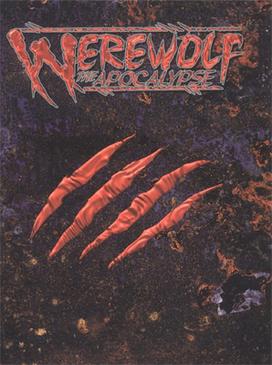
Werewolf: The Apocalypse is a role-playing game of the Classic World of Darkness game series by White Wolf Publishing. Other related products include the collectible card games named Rage and several novels. In the game, players take the role of werewolves known as "Garou". These werewolves are locked in a two-front war against both the spiritual desolation of urban civilization and supernatural forces of corruption that seek to bring the Apocalypse. Game supplements detail the other shape-shifters.

Wraith: The Oblivion is a tabletop role-playing game designed by Mark Rein·Hagen. It is set in the afterlife of White Wolf Publishing's classic World of Darkness setting, in which the players take on characters who are recently dead and are now ghosts.

Kindred of the East is a tabletop role-playing game book and game line released by White Wolf Publishing in February 1998 for use with their horror game Vampire: The Masquerade. It is part of the World of Darkness series, and is the first and main entry in the Year of the Lotus line of Asia-themed books released throughout 1998.
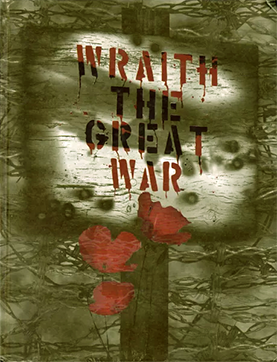
Wraith: The Great War is a role-playing book published by White Wolf Publishing in May 1999.

The Book of Nod is an epic poem written by Sam Chupp and Andrew Greenberg, published by White Wolf Publishing in 1993. Based on the tabletop role-playing game Vampire: The Masquerade and the World of Darkness series, it tells the creation myth of vampires, following Caine, the first vampire and the biblical first murderer.
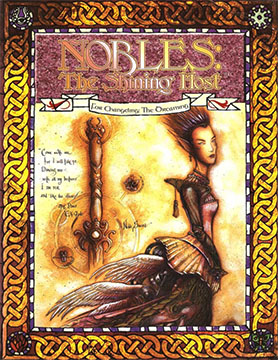
Nobles: The Shining Host is a tabletop role-playing game supplement released by White Wolf Publishing in March 1996 for use with their game Changeling: The Dreaming, and is part of the larger World of Darkness series. The book primarily describes the sidhe and other fae nobility, covering their history and giving more depth to the creation of sidhe characters, as well as fae politics in the setting.
The Masquerade is a 1994 live action role-playing game published by White Wolf Publishing.
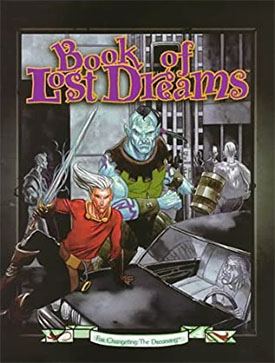
Book of Lost Dreams is a tabletop role-playing game supplement published by White Wolf Publishing in September 1997 for use with the horror game Changeling: The Dreaming, and is part of the World of Darkness series. It introduces expanded rules for cantrips and combat, describes creatures from other World of Darkness games to aid cross-over play, and contains the adventure "Capture the Flag". The book was released together with a storyteller screen, which contains rules information and tables for storytellers to reference while running a campaign. The book was well received by critics, who considered "Capture the Flag" a good way to introduce players to the Changeling: The Dreaming setting.

The Risen is a tabletop role-playing game supplement published by White Wolf Publishing in June 1996 for use with the horror game Wraith: The Oblivion. It adds the risen as playable characters: wraiths that inhabit dead bodies to become walking dead.

Chicago by Night is a tabletop role-playing game supplement originally released by White Wolf Publishing in 1991 for use with the first edition of their game Vampire: The Masquerade, and released in updated versions for the game's second and fifth editions in 1993 and 2020. As a sandbox-style setting sourcebook for storytellers to use in campaigns, Chicago by Night describes the city of Chicago as it is portrayed within the game's setting, reinterpreted as having a large population of vampires.

Revelations of the Dark Mother, subtitled Seeds from the Twilight Garden, is an epic poem written by Phil Brucato and Rachelle Udell, illustrated by Rebecca Guay, Vince Locke, and Eric Hotz, and published by White Wolf Publishing in November 1998. Based on the tabletop role-playing game Vampire: The Masquerade and the World of Darkness series, the poem centers around Lilith and is her counterpoint to 1993's The Book of Nod, a poem focused on Caine, the first murderer. It is written in the same style as The Book of Nod, with heavy use of illustrations, and with a "vampire scholar" framing.

Le Monde des Ténèbres: France is a tabletop role-playing game supplement published in French by Ludis International in January 1997, for use with the games in White Wolf Publishing's World of Darkness series. It interprets France for the series' gothic-punk setting, and presents information on the region related to vampires, werewolves, mages, wraiths, and changelings, along with story hooks and pre-made characters, and introduces two new types of fae to the series. Ludis International planned to follow it with a book about Paris in June 1997, but this never materialized, and the publisher closed down a year later.
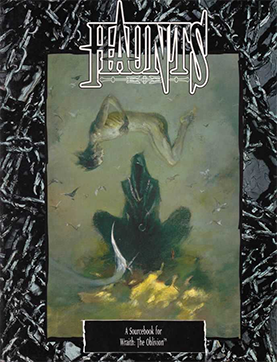
Haunts is a tabletop role-playing game supplement released in December 1994 by White Wolf Publishing for use with their game Wraith: The Oblivion, and is part of the larger World of Darkness series. It covers haunts – locations where the border between the lands of the living and the dead is particularly weak, allowing the player-character wraiths to take form in the human world – with instructions for creating new haunts for one's campaigns, and descriptions of ones already existing in the game's setting.
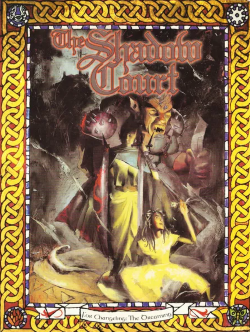
The Shadow Court is a tabletop role-playing game supplement released by White Wolf Publishing in January 1997 for use with their horror fantasy game Changeling: The Dreaming, and is part of the larger World of Darkness series.

Charnel Houses of Europe: The Shoah is a supplement published by the Black Dog imprint of White Wolf Publishing in March–April 1997 for the horror role-playing game Wraith: The Oblivion, itself part of the series of horror role-playing games known as World of Darkness.
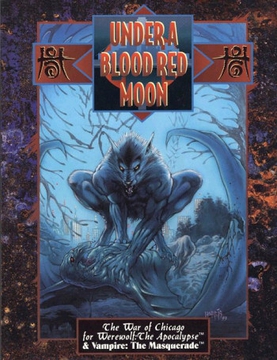
Under a Blood Red Moon is an adventure module released in June 1993 by White Wolf Publishing for use with either of their tabletop role-playing games Vampire: The Masquerade and Werewolf: The Apocalypse, and is a part of the World of Darkness series. It is set in and around Chicago, and follows the conflict between the local vampire and werewolf communities; players take the roles of werewolves, or vampires belonging to the Camarilla or Sabbat sects.

















